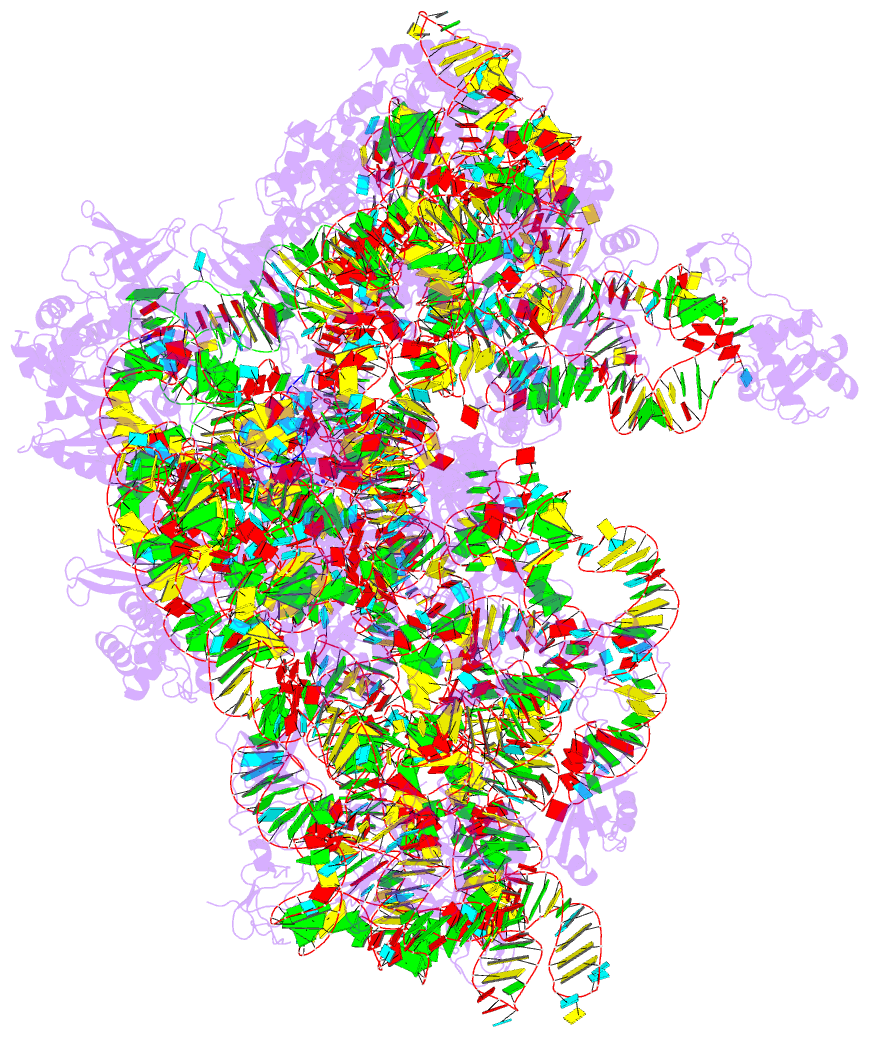Summary information and primary citation
- PDB-id
- 5jb3; DSSR-derived features in text and JSON formats
- Class
- translation
- Method
- cryo-EM (5.34 Å)
- Summary
- cryo-EM structure of a full archaeal ribosomal translation initiation complex in the p-remote conformation
- Reference
- Coureux PD, Lazennec-Schurdevin C, Monestier A, Larquet E, Cladiere L, Klaholz BP, Schmitt E, Mechulam Y (2016): "Cryo-EM study of start codon selection during archaeal translation initiation." Nat Commun, 7, 13366. doi: 10.1038/ncomms13366.
- Abstract
- Eukaryotic and archaeal translation initiation complexes have a common structural core comprising e/aIF1, e/aIF1A, the ternary complex (TC, e/aIF2-GTP-Met-tRNAi(Met)) and mRNA bound to the small ribosomal subunit. e/aIF2 plays a crucial role in this process but how this factor controls start codon selection remains unclear. Here, we present cryo-EM structures of the full archaeal 30S initiation complex showing two conformational states of the TC. In the first state, the TC is bound to the ribosome in a relaxed conformation with the tRNA oriented out of the P site. In the second state, the tRNA is accommodated within the peptidyl (P) site and the TC becomes constrained. This constraint is compensated by codon/anticodon base pairing, whereas in the absence of a start codon, aIF2 contributes to swing out the tRNA. This spring force concept highlights a mechanism of codon/anticodon probing by the initiator tRNA directly assisted by aIF2.





